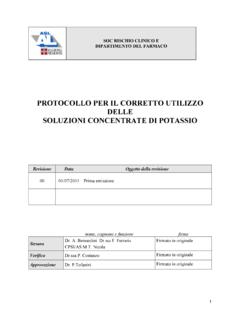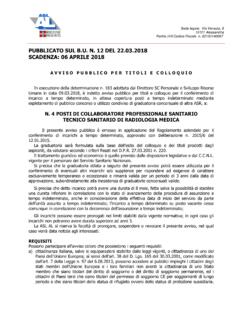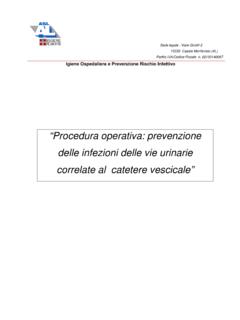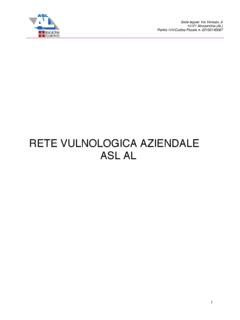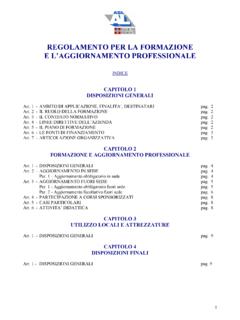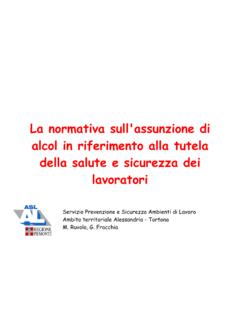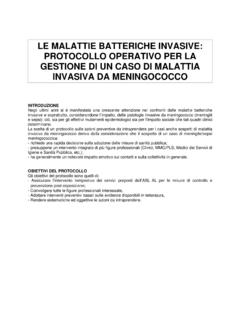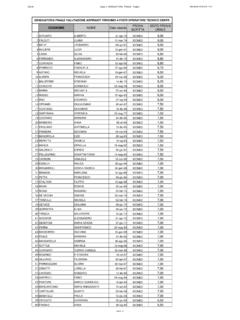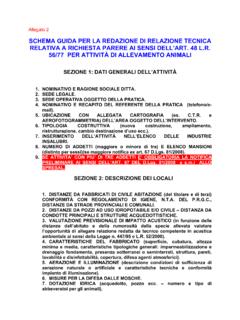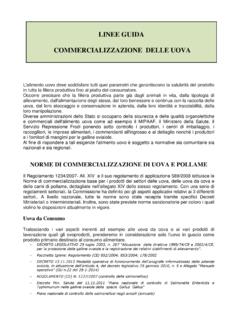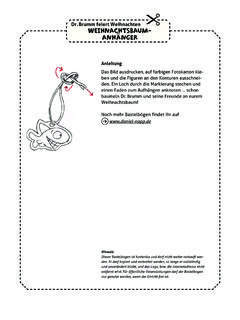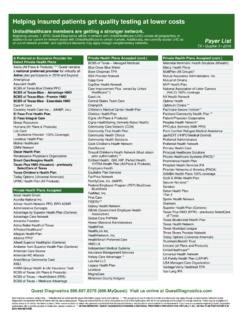Transcription of SAFETY DATA SHEET Napp Pharmaceuticals Group …
1 Material: Levact Approved/Revised 10/2010 Version SAFETY data SHEET . Napp Pharmaceuticals Group Levact mg/ml. 26mg and 60mg Vials 1. IDENTIFICATION OF THE SUBSTANCE/PREPARATION AND OF THE COMPANY. Product Levact mg/ml. 26mg and 60mg Vials Medicinal Product Other names/ Synonyms Ribomustin . Company Name Napp Pharmaceuticals Group The Science Park Milton road Cambridge CB4 0AB. Main reception: 01223 424444. Health, SAFETY & Environment Dept: 01223. 424444 (08:30-16:30). Medical Information: 01223 424444. 2. HAZARDS IDENTIFICATION. BENDAMUSTINE HYDROCHLORIDE CAS 3543-75-7. Classification By EC1272/2008 Acute Toxicity Oral: Cat 3. Carcinogenicity: Cat 2. Reprotoxicity: Cat1B. Signal word: Danger Hazard Statements H301 Toxic if swallowed H351 Suspected of causing cancer H360 May damage fertility or the unborn child Precautionary statements P201 Obtain special instructions before use P281 Use PPE as required P301+P310 If swallowed (call a poison centre or Doctor).
2 P308+P313 If exposed get medical advice Classification By 999/45/EC, 67/548/EC Harmful If swallowed, Xn Limited Evidence of carcinogenic effect May Impair fertility May cause Harm to the unborn child R-Phrases R60 May impair fertility R61 may cause harm to the unborn child R22 harmful if swallowed R40 Limited evidence of carcinogenic effects S-Phrases S36 wear suitable Protective clothing S37 Wear suitable Gloves Levact 1 of 6. Material: Levact Approved/Revised 10/2010 Version 3. COMPOSITION/INFORMATION ON INGREDIENTS. Active ingredient: CAS No Chemical name Hazard classification Bendamustine CAS No: 3543-75-7 Chemical name: 4- H301, H351, H360. hydrochloride: [1-methyl-5-bis(2- concentration 43% chloroethyl)amino- Xn, R60, R61, R22, R40. benzimidazolyl(2)]. butanoic acid hydrochloride Non Hazardous Mannitol CAS: 69-65-8 Non hazardous 67/548/EC. 4. FIRST AID MEASURES.
3 General information Remove contaminated clothes. Helpers should take care to protect themselves. Following inhalation Rest, fresh air. Seek medical help in the event of breathing difficulties. Following skin contact Thoroughly wash affected areas of the skin immediately with plenty of warm water and soap. Seek medical help. Following contact with the eyes: Thoroughly rinse eyes, with lids open, immediately under running water. Seek medical help. After swallowing: Rinse mouth immediately (only if casualty is conscious) and then drink plenty of water in small sips (dilution effect). Do not leave person concerned unattended. Keep them warm in a quiet location. Seek medical help immediately . Information for doctors Bendamustine hydrochloride is an N-yperite-type alkylating substance which is structurally similar to Melphalan and Chlorambucil. No specific antidote is available.
4 Bendamustine hydrochloride is used as the active ingredient in the drug Ribomustin . There is no extensive expert knowledge available on the symptoms which Ribomustin causes in the event of an overdose. The following side effects, among others, should be looked out for in the event of an overdose: myelosuppression such as leucocytopenia, thrombocytopenia and anaemia, vomiting, nausea, diarrhoea, cardiac arrhythmia, skin changes, stomatitis, neuropathies, diseases of the central nervous system, increase in liver and kidney values, lung function disorders, alopecia, local neurological irritations and thrombophlebitis. Bone marrow transplants and transfusions (thrombocytes, blood) can be carried out or haematological growth factors can be given as effective countermeasures for controlling haematological side effects. Further information can be found in the Levact production information and user information.
5 Levact 2 of 6. Material: Levact Approved/Revised 10/2010 Version 5. FIRE-FIGHTING MEASURES. Suitable extinguishing media Water, powder or foam. Acid fumes and corrosive decomposition products may be formed. Prevent the product from entering the drainage system. Extinguishing media which must not be used for Not known SAFETY reasons Fumes posing a hazard which may arise Carbon monoxide in the event of fire: Hydrogen chloride Nitric oxides (NOx). Special protective equipment: Emergency services must be equipped with self- contained breathing apparatus and light chemical protective suits. Respiratory protection and light chemical protective suits must be worn when carrying out disposal tasks. 6. ACCIDENTAL RELEASE MEASURES. Personal precautions Personal protective clothing must be worn. (nitrile gloves, respirator) Unauthorised persons must be kept out of the area. Environmental precautions Do not allow to enter drains / surface waters /.
6 Ground water / soil. Methods for cleaning up/collection Air: Suppress product dust or decomposition products using a finely dispersed water spray. Water: Prevent the product or contaminated extinguishing water from entering drains. Soil: Collect carefully and place in sealable containers. Wear respiratory protection to carry out disposal work. 7. HANDLING AND STORAGE. Handling Advice on safe handling: The product should be handled only by trained personnel. Use only tightly sealed installations, apparatus or containers. Avoid generating dust and aerosols. Wear SAFETY glasses and protective gloves. Use a particle filter in any breathing apparatus. Storage Store in a dry place at room temperature with protection from light in tightly sealed containers. Keep away from food and drink. Levact 3 of 6. Material: Levact Approved/Revised 10/2010 Version 8. EXPOSURE CONTROLS/PERSONAL PROTECTION.
7 Occupational Exposure limit values No occupational exposure limits set for this material Respiratory Protection Where a risk assessment shows that respiratory protection is required a suitable respirator to EN. standards, fitted with P3 filters should be used. Hand protection Suitable gloves to EN standards should be worn. Eye protection Protective SAFETY glasses should be worn. Exposure Controls Handle in enclosed systems where possible, glove box or SAFETY cabinets, Ensure suitable extraction / ventilation in the workplace. Prevent dust generation. Handle in accordance with Good Industrial Hygiene and SAFETY practise. 9. PHYSICAL AND CHEMICAL PROPERTIES. Appearance Form: microcrystalline powder;. Colour: white Odour: odourless SAFETY parameters Value Unit Method Melting temperature 152-156 C. pH of substance in solution at 20 C 3-4 g/L. Further information Solubility in water at 20 C g/L.
8 Density of the reconstituted solution at 20 C g/mL. (25mg/10mL or 100mg/40 mL). Solubility in organic solvents very readily soluble in ethanol 10. STABILITY AND REACTIVITY. (active substance Bendamustine hydrochloride). Thermal decomposition/conditions to be At approx. 240 C. avoided Dangerous reactions/materials to be avoided: None Hazardous decomposition products Hydrogen chloride gas, vapours and fumes;. formation of nitrose gases, carbon monoxide and carbon dioxide possible. Levact 4 of 6. Material: Levact Approved/Revised 10/2010 Version 11. TOXICOLOGY INFORMATION. Acute toxicity: Active ingredient: Bendamustine hydrochloride Animal Application LD50. species Rat 40 mg/kg BW*. Mouse ; 80 mg/kg BW. Rat Oral 200mg/kgBW. *BW = body weight Embryotoxic, teratogenic and mutagenic effects occurred in animal experiments. The substance was clearly carcinogenic in the animal experiments.
9 Experiences in humans The following side effects, among others, should be looked out for in the event of an overdose: in high doses general cell damage can occur on bone marrow, on the lymphatic apparatus, on the gonads, oral, intestinal and bladder mucosa, as well as on the skin and adnexa. Kidney and liver damage, depression of the immune system and neurotoxic damage can also occur. 12. ECOLOGICAL INFORMATION. Toxicity No data available Persistence and degradability No data available Bioaccumalative dta No data available Mobility No data available PBT and vPvB assessment No data available Other adversve affects No data available 13. DISPOSAL CONSIDERATIONS. Product & Packaging Dispose of in accordance with local regulations. European Waste Code 18 01 08 (Cytotostatic Medicinal waste from Human healthcare products). Levact 5 of 6. Material: Levact Approved/Revised 10/2010 Version 14.
10 TRANSPORT INFORMATION. ADR/RID UN-Number: 2811 Class: Packing Group : III. Proper shipping name: TOXIC SOLID, ORGANIC, (Bendamustine hydrochloride). IMDG UN-Number: 2811 Class: Packing Group : III. EMS-No: F-A, S-A. Proper shipping name: TOXIC SOLID, ORGANIC, (Bendamustine hydrochloride). Marine pollutant: No IATA UN-Number: 2811 Class: Packing Group : III. Proper shipping name: Toxic solid, organic, (Bendamustine hydrochloride). 15. REGULATORY INFORMATION. Medicinal Product EC 26/2004. Hazard classification Classification By 999/45/EC, 67/548/EC. Classification By EC1272/2008. MSDS EC1907/2006. Text of H Codes and R Phrases used in section 3 H301 Toxic if swallowed H351 Suspected of causing cancer H360 May damage fertility or the unborn child R60 May impair fertility R61 may cause harm to the unborn child R22 harmful if swallowed R40 Limited evidence of carcinogenic effects 16.
